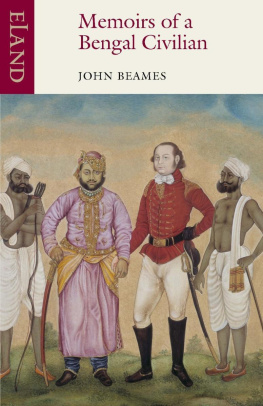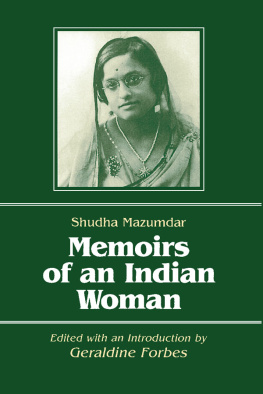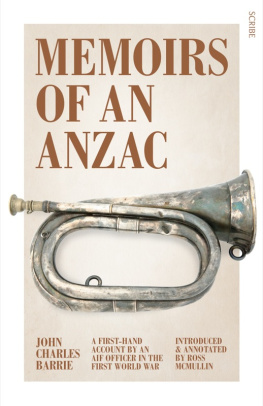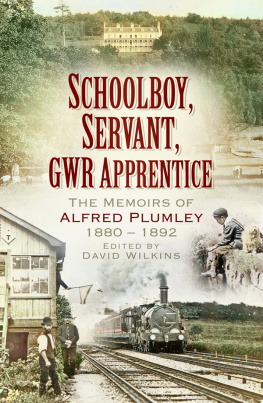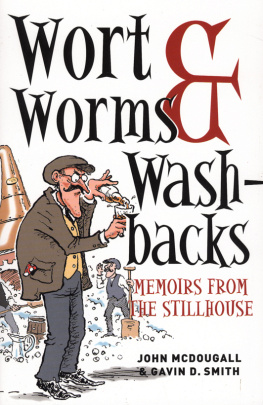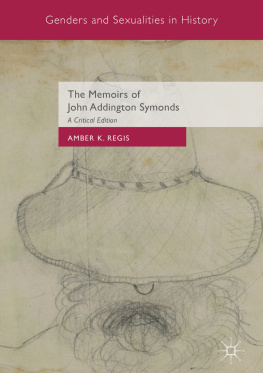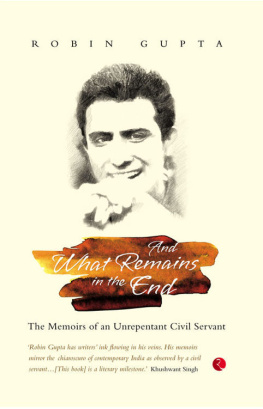This narrative was begun at Cuttack, where I was Magistrate and Collector, in 1875, and was continued at intervals till 1878 when, owing to my being transferred to Chittagong, and to other causes, it was discontinued. I tried to go on with it in 1880 at Chinsura but I then found a curious thing. I could not remember recent events so clearly as I did those which had occurred long ago. As I had brought down my narrative to the year 1870 it was necessary to wait till the subsequent events had receded further into the past so that I might recollect them better. The manuscript was therefore laid aside, and by degrees forgotten. Now in the year 1896, having retired from the Civil Service, and returned to England, I take it up again, and as on reading it over I see many things which I should now prefer to describe differently, as well as some which are incorrect, it seems better to write it from the beginning.
If it should be asked why so obscure a person should think it worth his while to write the story of his life at all I reply that it is precisely because I am an obscure person an average, ordinary, middle-class Englishman that I write it. There is an abundance of biographies of eminent and illustrious men, but the very fact that they were eminent takes them out of the category of ordinary mortals. Their lives, therefore, though deeply interesting on account of their great deeds, are different from the general run of men who were their contemporaries. It will I think be interesting to posterity or at any rate to my descendants to read the account of how an ordinary, average Englishman lived in the reign of Queen Victoria. Such as my life has been, such has been that of thousands of other men in this period of time. And as India, where I spent so large a portion of my life, is already changing and many institutions and conditions of existence which were in my day, are passing away, the Indian part of my life may be perhaps useful as a record of a state of things which has ceased to be. Finally my descendants if they ever read these pages may be interested in learning what manner of men their forefathers were. And even if no one should care to read these pages, it amuses me to write them, which is perhaps as good a reason for writing them as any other.
Ancestors
Before I begin to write about myself I ought, I think, to give some account of my ancestors. These, as far as we know about them, may be divided into two groups, one beginning in the eleventh and stretching down to the fifteenth century, the other beginning at the end of the seventeenth century and descending in an unbroken line to the present day. With the first group our connection is, if not doubtful, at any rate not clearly traceable, so I shall merely mention a few of the best established facts concerning them.
Of course they came over with the Conqueror, like all respectable English families. It is the fashion to laugh at this claim, as a mere idle boast. But it is true in our case, at least if we are really descended from this family. In the Roll of Battle Abbey among the names of Duke Williams followers occurs the name Belemis. It is also spelt Belmeys, Beaumeis, Bealum, and in various other ways. Spelling in those times was not subject to any rules. There were three brothers of this name in the Norman Army William, Richard and Walter. They came according to one account from Beaumez near Alenon, according to another from Les Beaumes near Avignon. They were attached to the service of Roger de Montgomeri, Earl of Shrewsbury, and obtained the manors of Tong and Donington in Shropshire, as also Ashby in Derbyshire. Richard was a priest and rose to be Bishop of London in 1108, and Warden of the Welsh Marches. He devoted all his episcopal income to the rebuilding of St Pauls Cathedral. His nephew, also called Richard, became Bishop of London about 1145. The Tong and Donington lines died out, the first in 1200, the second in 1329 but there was a third line settled in Lincolnshire represented by Henry de Belemis of Limberg Magna, and another at Sawtree Beaumes in Huntingdonshire. A de Beaumys also held lands in Sussex and near Reading, where there is still a ruined moat called Beaumys Castle.
About the year 1450 the last of various scattered notices of persons of this name is found. The family appears to have sunk into obscurity in the Wars of the Roses. Besides the identity of name, there is also the fact that their crest and coat of arms were the same as those we now bear to support the supposition that we are descended from them.
If so, it is most probably from the branch settled near Reading that we are derived, for about two centuries later the name Beaumes or Beames is found to be tolerably common in Berkshire and North Wiltshire, and some of them were bankers in Chippenham.
It was probably to this line that the John Beames belonged who, in or about 1728, married Sarah, daughter of the Revd John Power of Clifton near Bristol. This John Beames is sometimes called Roger Beames (by my grandfather in some notes of his which I have). I do not know why. He is said to have been born in 1695 and may be regarded as the founder of the present family. The Revd John Power by his will dated 26nd March 1743 bequeathed all his property at Clifton to his grandson John Beames, son of his daughter Sarah. This property remained in the family for several generations, in fact, a portion of it is in their possession still. Although the social position of John I, alias Roger, does not seem to have been very exalted, he was evidently of gentle birth, he was an armiger, and I have in my possession two silver shields of his or his sons bearing azure six garbs or, 3, 2 and 1, crest a garb or; the same coat and crest as that of the old Norman de Beaumys.
I know nothing more about John I, except that he had two sons, John II and George. In an affidavit sworn at the Guildhall, London, by this George on 2nd December 1786 before the celebrated Wilkes, Lord Mayor, John II is described as late of St Mary Overys Churchyard in the parish of St Saviours Southwark in the County of Surrey, victualler, deceased and George himself is described as a butcher of Oxford Street. The descendants of the Norman Barons had come down in the world, but not more so than those of many others whose names are in the Roll of Battle Abbey. These ancient names, as the Duchess of Cleveland shows, survive very largely among the peasantry when they have died out among the noble and gentle families.
In 1749 John II married Sarah Halliday, and had two sons and two daughters. His eldest son died in a terrible manner when an infant thirteen months old. The father had been out and returning home stood for a while on his doorstep talking to a friend. The nurse, who was at an upper window, seeing him below held out the baby to see its father. The child in its eagerness to reach its father sprung forwards, slipped out of the nurses arms, fell and was dashed to pieces on the doorstep before its fathers feet! His second son John III was born in 1754 and baptized at St Jamess Church, Piccadilly where the baptismal certificate was found a hundred years later by my father when he was Assistant Preacher of that church. The two daughters were named Sarah and Mary. The latter is said to have married one Connop, but beyond this, I have no information about them.

